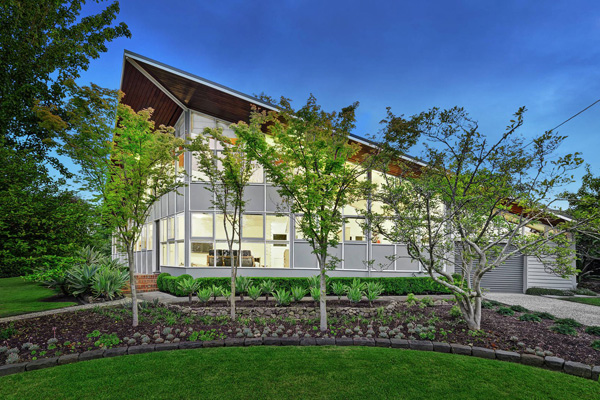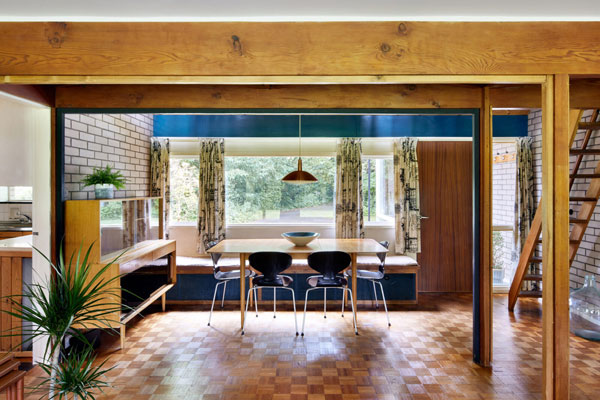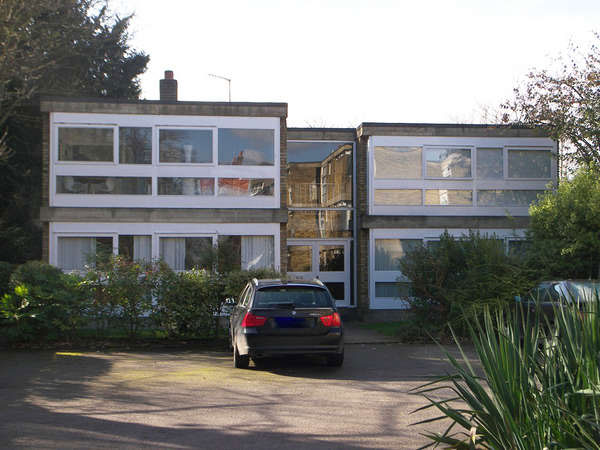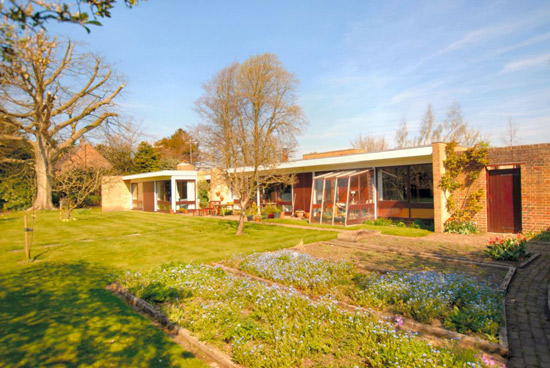Claude Parent’s 1950s Maison G in Ville-d’Avray, Paris, France
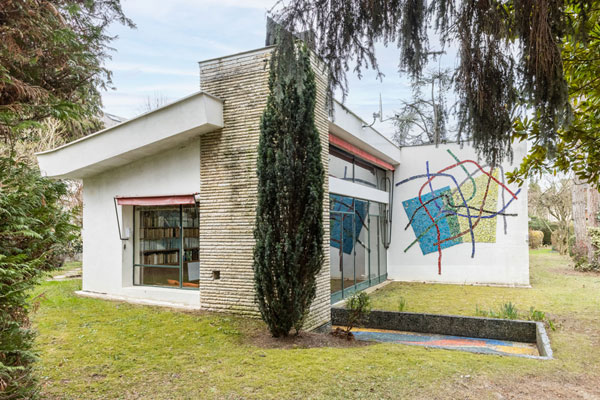
The first house was built by the architect and untouched since. Claude Parent’s 1950s Maison G in Ville-d’Avray, Paris, France is up for sale.
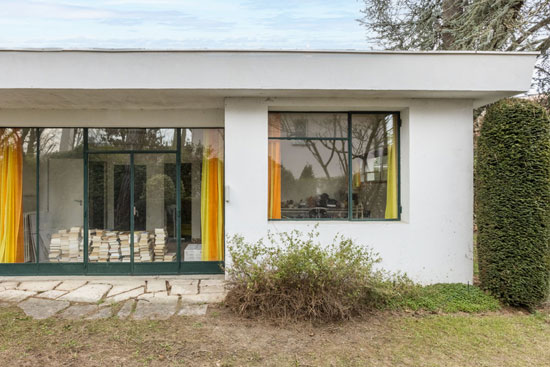
The isn’t just a house. It’s both a groundbreaking piece of architecture and a work of art. It’s also a house that, back in its day, won a national competition, pushing the name of the architect to the fore.
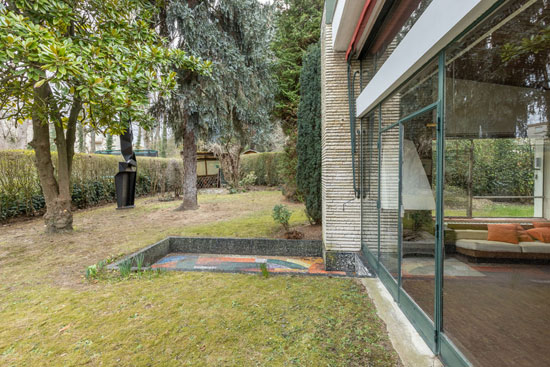
Back in 1952, a national competition was launched by the magazine La Maison Francaise. The brief demanded a functional and spacious modern house intended for a family of five people. Claude Parent, working alongside Ionel Schein and Gilles-Louis Bureau, produced Maison G and the rest, as they say, is history.
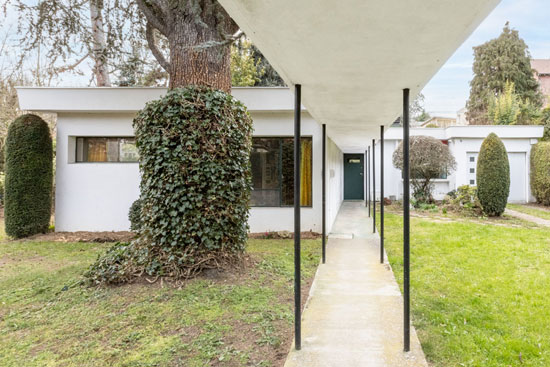
I have seen a number of modern and midcentury modern houses in France from this period and a little later, and it is fair to say that Maison G is at the heart of many of them. Stylish, functional, and forward-thinking.
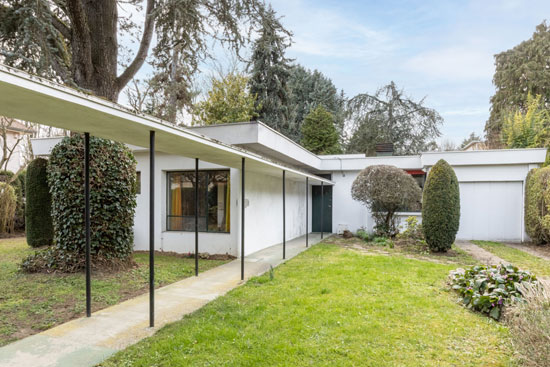
It takes on board the ideas of other innovative architects of the day. You’ll see hints of Frank Lloyd Wright or Richard Neutra, for example. Maybe something of Marcel Breuer in the stonework or the modular designs of Le Corbusier.
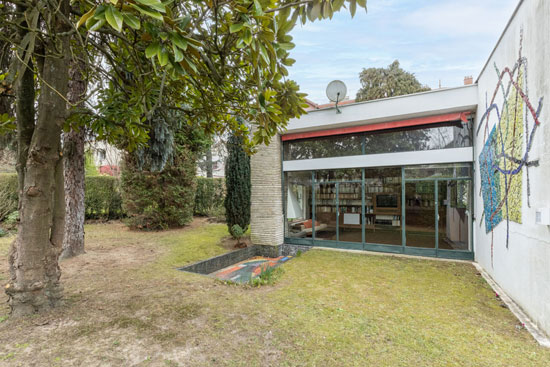
But the end result is very much 1950s French modernism, with some added ‘eye candy’ too. Note the exterior decoration, the work of Alain Richard, as well as Jean Maire’s garden design and Antoine Fasani’s internal colouring. Little touches leaving a big presence on the overall design. A few years later, members of the Espace Maximilien Herzele and Andre Bloc group also created the mosaics for the outdoor pool and the wall bordering the terrace.
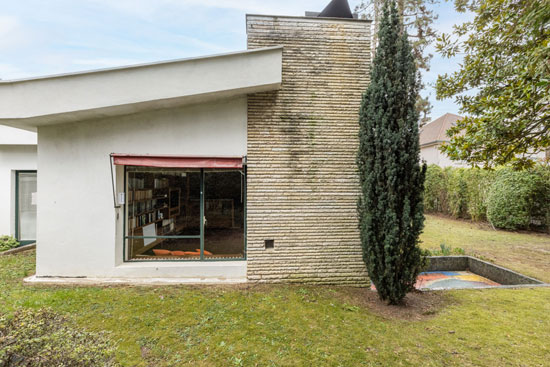
The layout, too, whilst modest in size, also caught the judges’ eyes. A splitting of the plan, sections of walls overflowing from the structure towards the garden, the inclination of the roof terraces, the ‘subtle differentiation’ of the spaces with variation in height under the ceiling, plus the modularity rooms thanks to movable partitions.
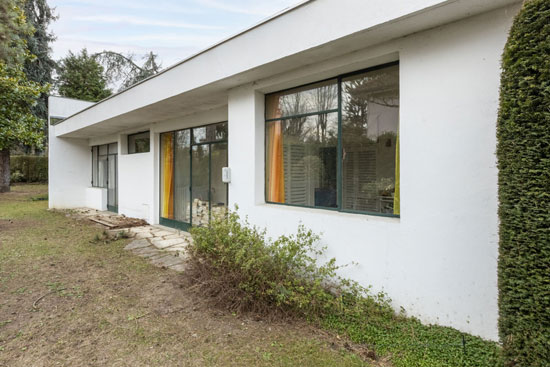
The kind of thing that’s hard to notice when looking at an agent’s imagery (which is excellent, by the way) but should come to life with a viewing.
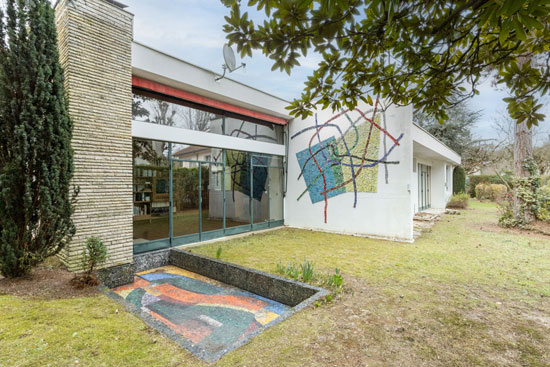
But at the end of the day, this is a house and one looking for a new owner. It’s a tough one, really. This is the midcentury modern dream, but you will have to ‘live the era’. It would be unthinkable to change anything of substance here, Not least because so much of the house, inside and out, bears the stamp of the man behind it.
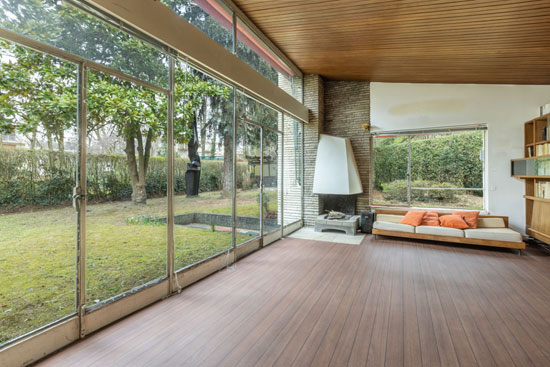
The house has retained all of its original materials, fittings and storage. The custom-made bookcase furniture and the benches in the living space are signed by Claude Parent. They are irreplaceable. The rooms are also furnished by the Mai gallery, with pieces by Pierre Guarriche, Max Bill and Bruno Mathsson.
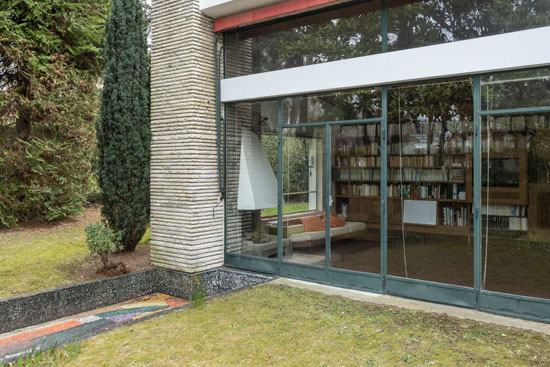
Note also that garden is embellished with a pond made by the mosaicist Maximilien Herzele, while the terrace is bordered by a wall decorated with a mosaic made by Andre Bloc. Details that have survived for over seven decades and, hopefully, will survive for many more.
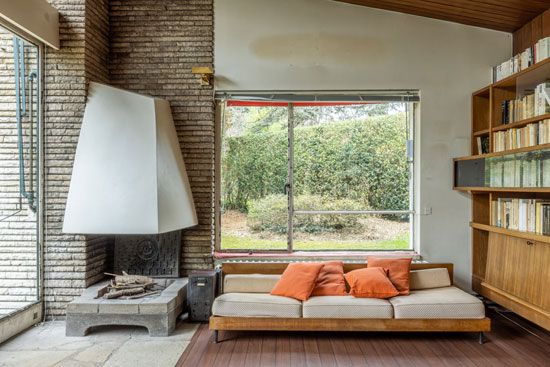
If you are considering buying, you will want to know the practical side of things too. You will find Maison G in what’s described as a ‘privileged location’ in the centre of Ville-d’Avray, near the Parc de Saint-Cloud. Ville-d’Avray is in the western suburbs of Paris, around 7.4 miles from the centre.
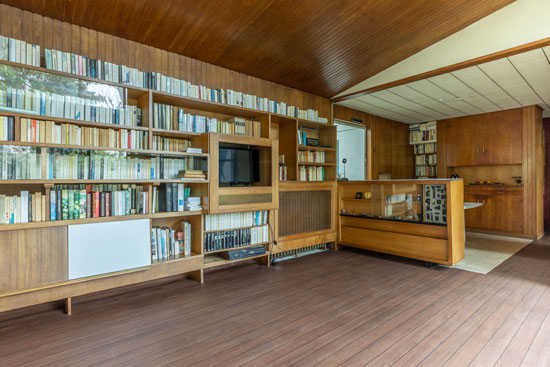
The house is built on a single level, offering something like 116 sq. metres of living space, with the house located within a wooded plot of 702 sq. metres.
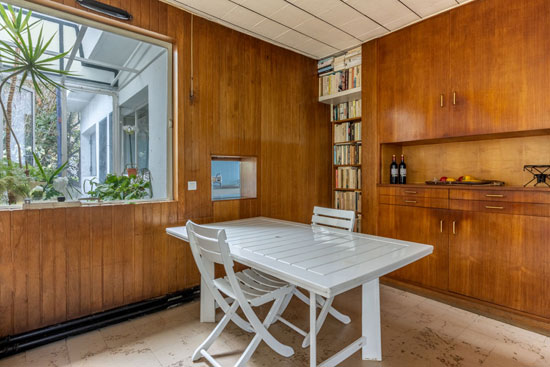
A slightly raised covered walkway leads to an entrance accessing the three wings of the house. To the south, the main reception space is made up of a living room with a ‘sculptural’ corner fireplace, which in turn opens onto the garden thanks to a wall of bay windows.
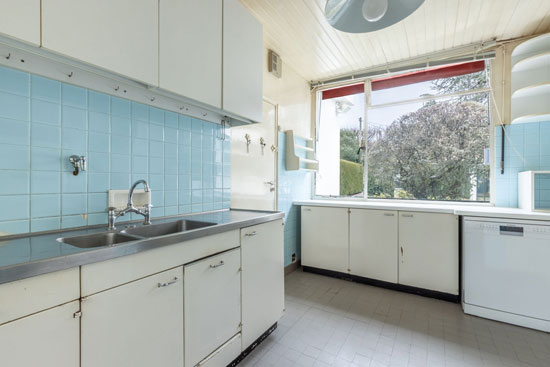
Beyond that is the dining room, which opens onto a green patio thanks to the tilt-and-turn window. There is also a connection to the kitchen via a serving hatch. Everyone loves a serving hatch.
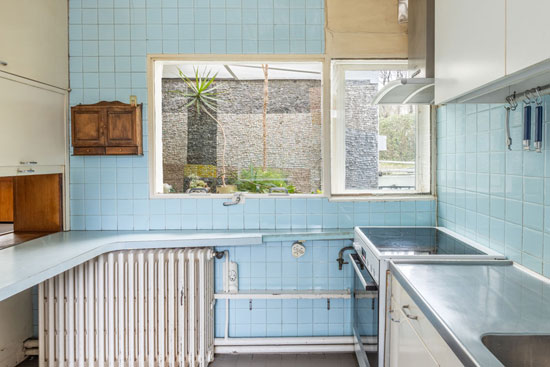
The kitchen is likely to be a dream for many of you. One of those rooms that might not be as practical as a 21st-century space, but just look at it. The modern kitchen of a bygone age. And I love those light blue tiles.
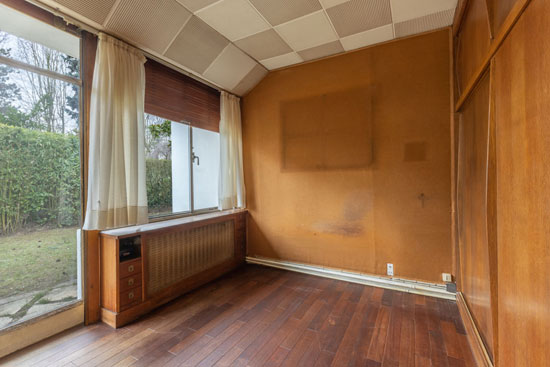
The ‘sleeping area’ includes three bedrooms, a games room, a bathroom and a shower room. The bathroom looks like it might have had a later update, but this is still very much a bathroom of the 1950s.
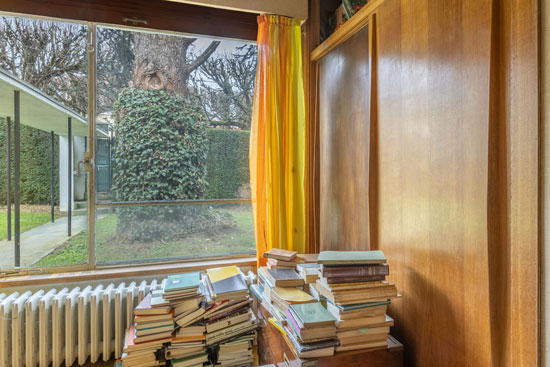
On the north side, there is an independent kitchen and a garage that is ‘easily convertible’ into a fourth bedroom or that modern-day essential of a home office. Note also that an independent studio of more than nine sq. metres with a water point is also accessible from the garden. A cellar completes the living space.
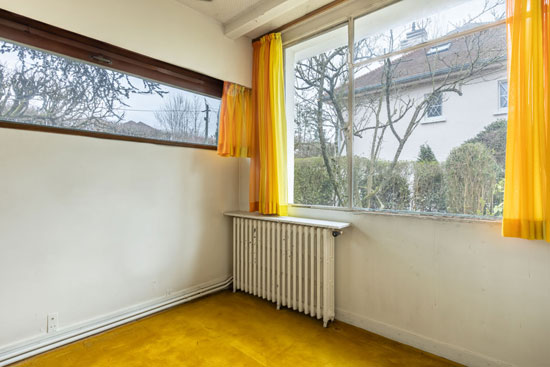
According to the agent, ‘work is to be expected’, and that will be the toughest call here. As I said earlier, you really need to maintain the key original details and the look and feel of the original house. But at the same time, this is a house, and you need to live in it now. So any work needs to be carefully considered.
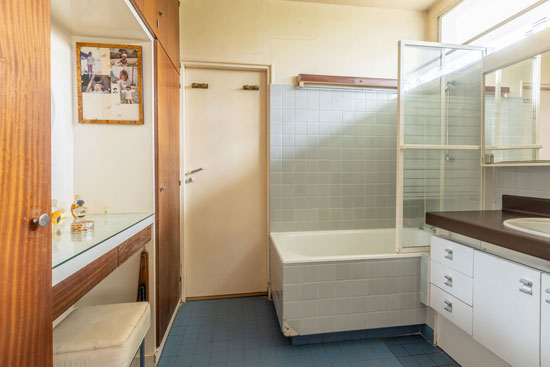
You will also need to consider the asking price. That is €1,498,000, which converts at today’s rate to £1,317,802 at today’s exchange rate. So not cheap for something of modest size. But you are buying an iconic house just a short distance from the centre of Paris. So with that in mind, perfectly understandable.
Images and details courtesy of Architecture de Collection. For more details and to make an enquiry, please visit the website.
All imagery is (c) Delphine Queme.
